The 15 Most Successful Formula 1 Cars of All Time
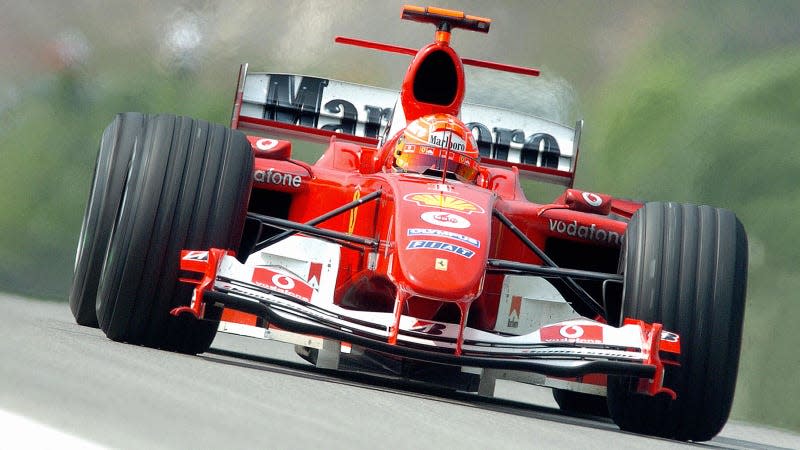
Formula 1 is a funny sport. While some fans celebrate the heroes in the driving seat for their masterful on-track action, others will argue that they’re only as successful as their last car. And in a year that has seen Red Bull driver Max Verstappen set records, that similar mantra of “it’s all because of his car” is being batted around again.
So, if we focus just on the cars for a second, what is the most successful F1 racer in history? If you look at the wins that teammates racked up in the same car over a year (or two), there have been some pretty dominant machines in Formula 1’s 72-year-history.
Read more
We trawled through the history books, counted up the race wins and compiled a list of the most dominant F1 cars of all time. To do this, we didn’t just look at the number of race wins. Instead, we figured out the percentage of victories taken from the number of races each car entered.
So, sit back, relax and see if you can guess which F1 racer has a 100 percent win record.
Benetton B195

Number of Wins: 11
Percentage of Race Victories: 64.71%
Michael Schumacher won his second world drivers title in the Benetton B195 back in 1995. Schumacher and teammate Johnny Herbert won 11 out of 17 races this year, including three back to back victories in the European, Pacific and Japanese Grands Prix.
Red Bull RB9
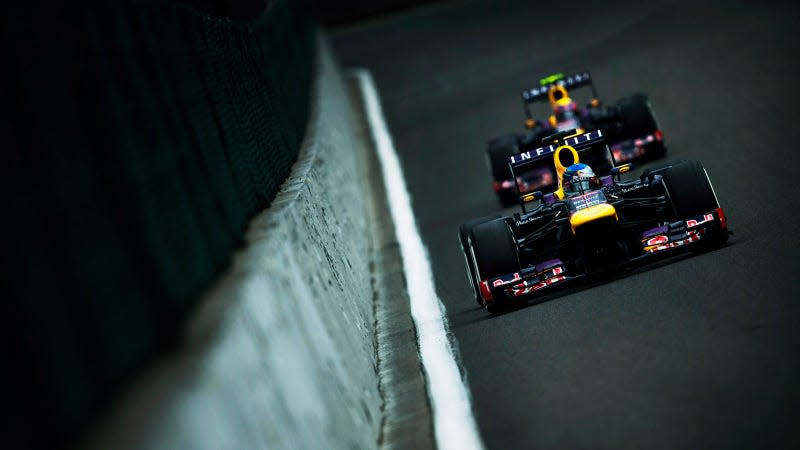
Number of Wins: 13
Percentage of Race Victories: 68.42%
Designed by Red Bull ace Adrian Newey, the RB9 was driven by Sebastian Vettel and teammate Mark Webber in the 2013 F1 season. Vettel picked up his fourth consecutive world title in this car, after claiming all of its 13 wins this season.
Mercedes AMG F1 W10 EQ Power+
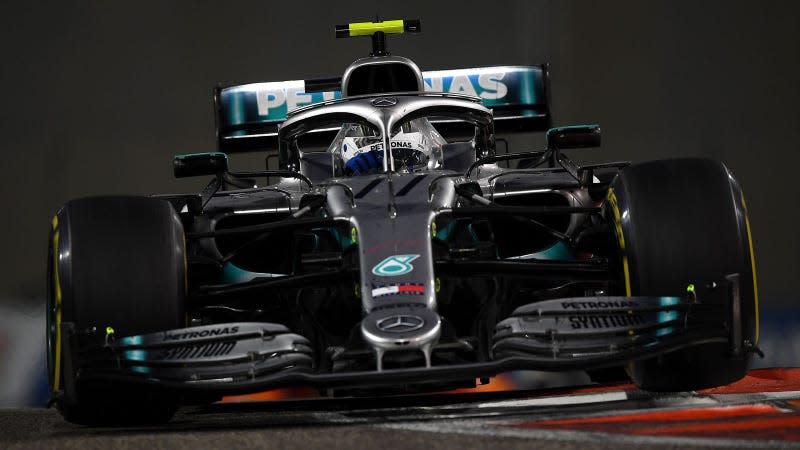
Number of Wins: 15
Percentage of Race Victories: 71.43%
Lewis Hamilton and Valtteri Bottas piloted the Mercedes W10 to the team’s sixth consecutive World Title in 2019. Over the course of the year, the duo picked up 15 wins and nine 1-2 finishes in this formidable racer.
Mercedes-Benz W196
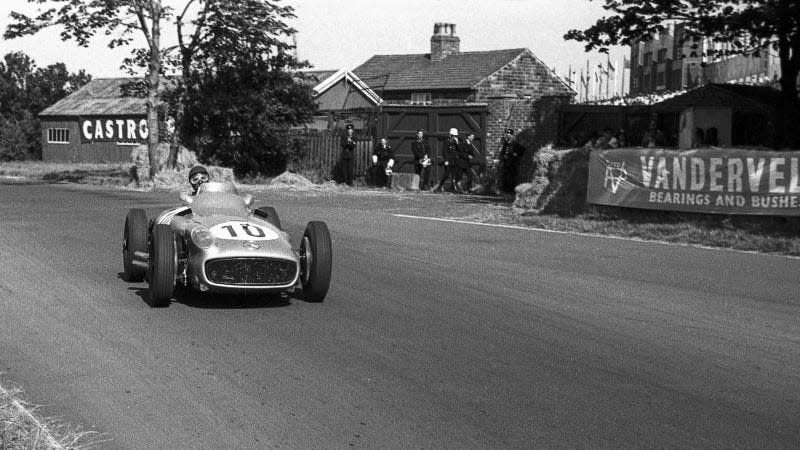
Number of Wins: 9
Percentage of Race Victories: 75%
A few years before Mercedes was dominating with the W10 it was winning race after race in its W196 way back in 1954. The W196 is the first car on our list to race in more than one season of F1, as Mercedes ran it in both 1954 and 1955. With drivers like Juan Manuel Fangio and Stirling Moss at the wheel, it won 75 percent of the races it entered.
Williams FW18
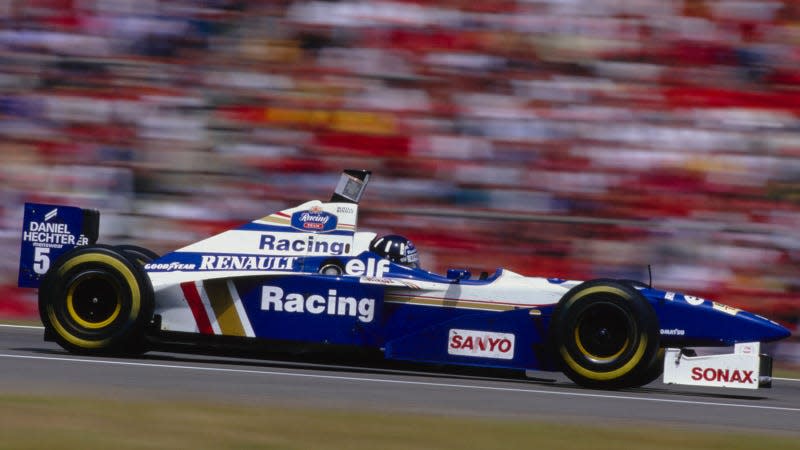
Number of Wins: 12
Percentage of Race Victories: 75%
Another creation from the mind of Adrian Newey, the FW18 dominated the 1996 Formula 1 season. Powered by a 3.0LRenault V10 engine, the FW18 notched up six 1-2 finishes with Damon Hill and Jacques Villeneuve at the wheel.
Ferrari F2004
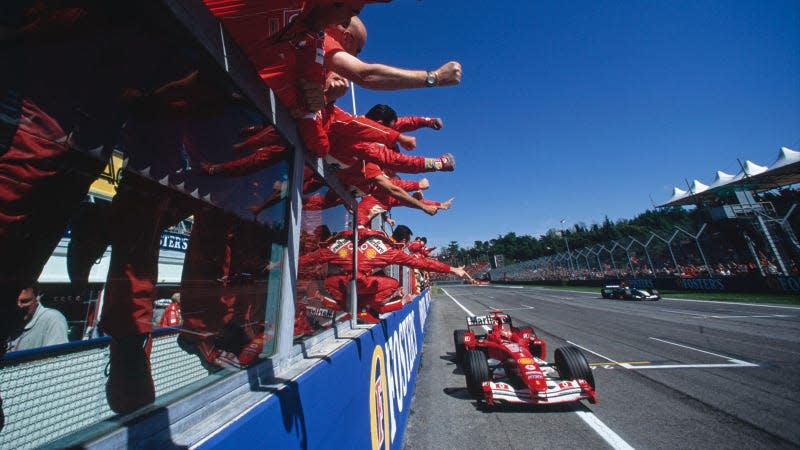
Number of Wins: 15
Percentage of Race Victories: 75%
Before becoming one of the big bosses at Formula 1, Ross Brawn helped pen some of the most successful race cars in history. Chief among those is the F2004 that helped Michael Schumacher to his seventh and final world championship back in 2004.
Mercedes-AMG F1 W11 EQ Performance
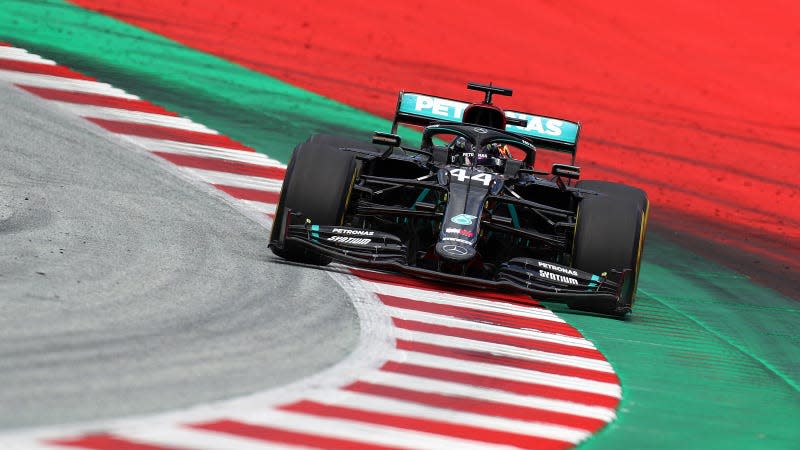
Number of Wins: 13
Percentage of Race Victories: 76.47%
Another car that helped a driver win his seventh title is the W11 from the Mercedes F1 team. In 2020, the W11 burst onto the scene with innovations such as DAS that helped it dominate the season. Lewis Hamilton and Valtteri Bottas picked up 13 out of a possible 17 grand prix wins that year.
Ferrari F2002

Number of Wins: 15
Percentage of Race Victories: 78.95%
The Ferrari F2002 was raced by the scarlet team in 2002 and 2003. Of the 15 victories it scored over the two years, nine were 1-2 finishes for drivers Michael Schumacher and Rubens Barrichello.
Red Bull RB18
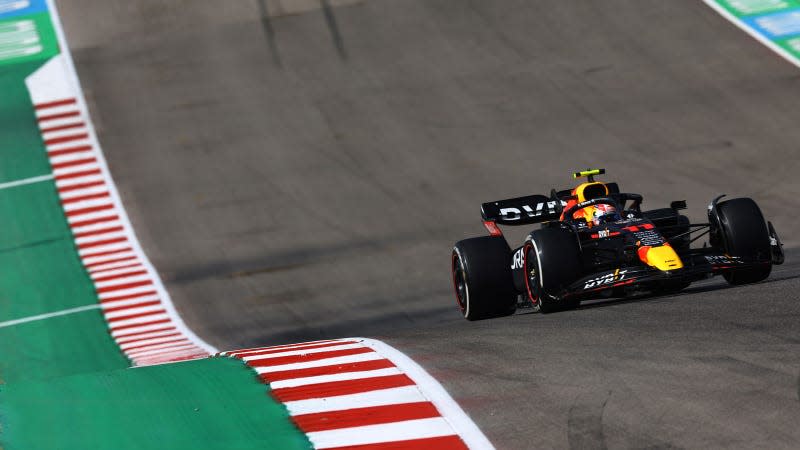
Number of Wins: 15
Percentage of Race Victories: 78.95%
The only entry on this list that could still move higher is the RB18 driven by Max Verstappen and Sergio Perez of Red Bull during the 2022 season. So far, it has racked up 15 wins but there are still three more races to run on the current calendar.
Mercedes F1 W05 Hybrid
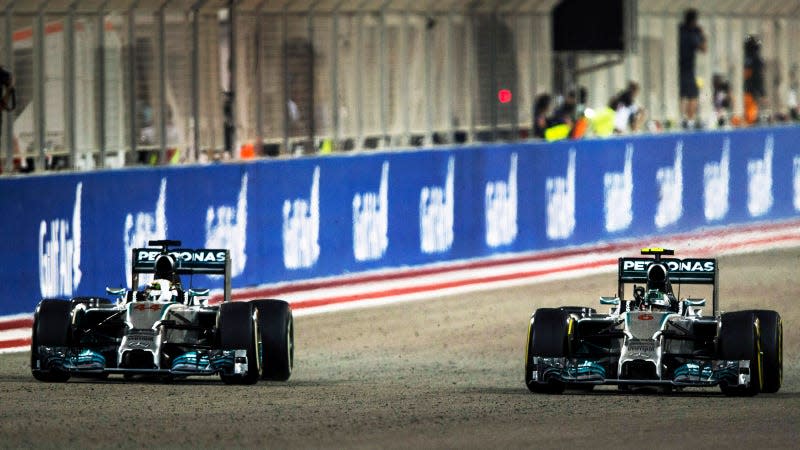
Number of Wins: 16
Percentage of Race Victories: 84.21%
In 2014, Formula 1 launched a sweeping set of rule changes that brought hybrid power units and new aerodynamic regulation to the sport. In the first year of the new rules, Mercedes turned up in the paddock with the blisteringly quick F1 W05 Hybrid, which won seven consecutive races with Lewis Hamilton and Nico Rosberg at the wheel.
Mercedes F1 W06 Hybrid
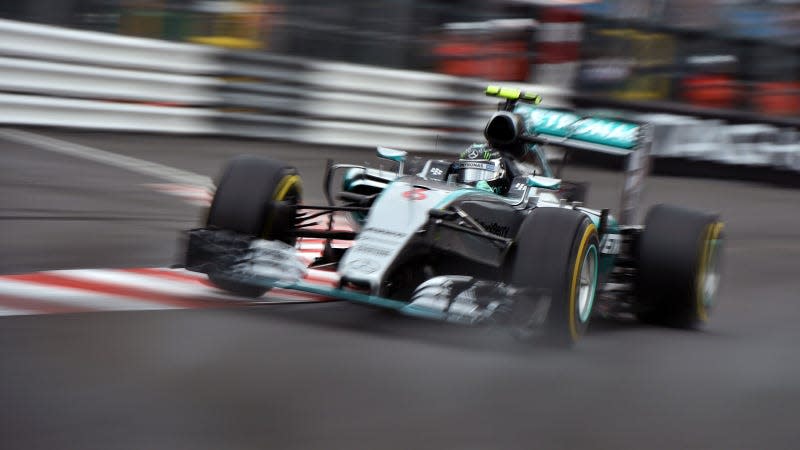
Number of Wins: 16
Percentage of Race Victories: 84.21%
The Mercedes W05 was followed by the equally dominant W06, which won 16 races in 2015. Regulation changes meant this race cart came with an updated front end, which was a welcome pivot away from the ugly cars that raced in 2014.
Mercedes F1 W07 Hybrid
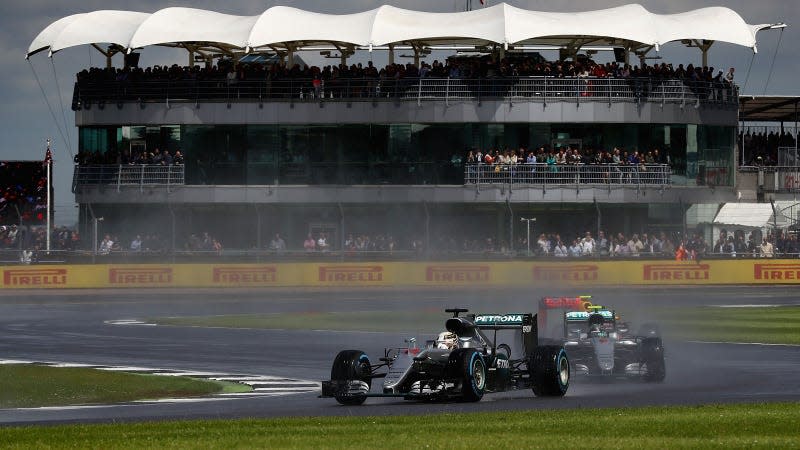
Number of Wins: 19
Percentage of Race Victories: 90.48%
Another year, another dominant new Mercedes F1 car. The W07 from 2016 was easily the most successful racer of the modern era, winning more than 90 percent of the races it entered. Between them, Lewis Hamilton and Nico Rosberg won all but two races this year, after both colliding in Spain and Rosberg coming home third in Malaysia.
Ferrari Tipo 500
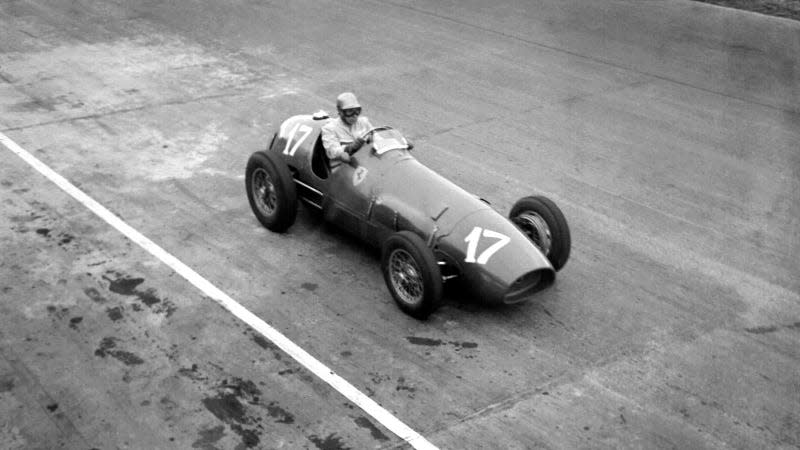
Number of Wins: 14
Percentage of Race Victories: 93.33%
In 1952 and 1953, Ferrari won race after race after race with its Tipo 500 race car. With drivers like Alberto Ascari, Piero Taruffi and Mike Hawthorn at the wheel, the 500 won 14 out of a possible 15 races over two seasons.
McLaren MP4/4
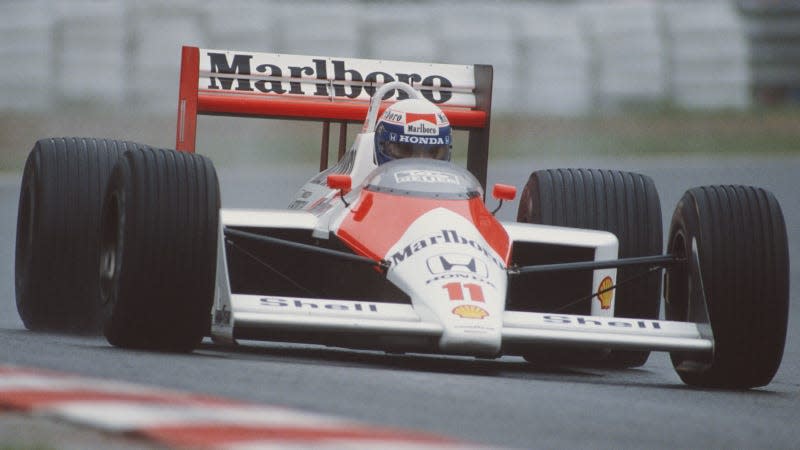
Number of Wins: 15
Percentage of Race Victories: 93.75%
Another car that only missed out on one win over all the races it entered was the incredible McLaren MP4/4 from 1988. Designed by American engineer Steve Nichols, the car racked up 11 consecutive race wins for the British team with Ayrton Senna and Alain Prost at the wheel.
Alfa Romeo 158

Number of Wins: 6
Percentage of Race Victories: 100%
Over Formula 1's 72-year-history, there is just one car that won every race it entered: the Alfa Romeo 158.
Originally developed all the way back in 1937, the Alfa 158 was powered by an eight cylinder engine that produced more than 300hp. With Juan Manuel Fangio and Giuseppe Farina at the wheel, the 158 had a clean sweep and won all six races it entered.
More from Jalopnik
Sign up for Jalopnik's Newsletter. For the latest news, Facebook, Twitter and Instagram.

 Yahoo Autos
Yahoo Autos 